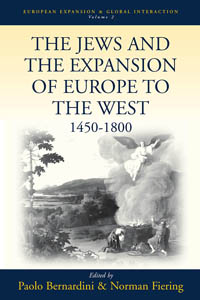Assumed Identities: The Meanings of Race in the Atlantic World by John D. Garrigus and Christopher Morris (review)Posted in Articles, Book/Video Reviews, History, Media Archive on 2013-04-02 23:52Z by Steven |
The Americas
Volume 69, Number 4, April 2013
pages 532-533
DOI: 10.1353/tam.2013.0017
James Sidbury, Andrew W. Mellon Distinguished Professor of Humanities
Rice University
John D. Garrigus and Christopher Morris, eds., Assumed Identities: The Meanings of Race in the Atlantic World (College Station: Texas A&M University Press, 2007)
This anthology of six essays on the complicated and sometimes surprising nature of black and white racial identities in the Atlantic region prior to the age of emancipation grew out of the 2007 Webb Memorial Lectures at the University of Texas at Arlington. The collection begins with an introductory essay in which Franklin W. Knight provides a broad and insightful overview of the meanings of race in different parts of the Americas, both historically and today. That is followed by four case studies that range from North America to the Caribbean to Brazil. The volume closes with an essay by Rebecca J. Scott and Jean M. Hébrard that traces a family’s odyssey as they moved from colonial Saint-Domingue to Cuba, then to Louisiana, then to Europe, and then back to Louisiana, before finally returning to Europe. The other essays do not touch on as many locales, but they match Scott and Hébrard in their complex portrayals of the ways various black and white people in the Americas conceived of racial difference and the ways in which people of African descent worked within those conceptions to build their lives.
Two case studies explore Anglo-American racial thought. Rebecca Goetz, taking a fresh look at seventeenth-century Virginia, argues that the Englishmen who settled there came to believe that Africans and Indians lacked the capacity for true Christian belief, and whites used this belief to explain enslaving and dispossessing them. “By questioning the ability of Africans to become Christian, settlers defined both their own religious and cultural identity” and that of their racial others (p. 65). Trevor Burnard explores the demands of Anglo-Caribbeans to establish their standing as good and respectable Englishmen. As previous scholars have noted, they failed, but Burnard argues that their failure has less to do with the libertinage for which they were famous (there being metropolitans who openly sympathized with libertine values) than with their admitted attraction to African women. Those in the metropole “suspected that white West Indians’ constant intercourse with Africans . . . was turning them from ‘proper’ white people into black people” (p. 79), a perception exacerbated by the belief that white women in the islands behaved too much like black women. “Whiteness was endangered by the dereliction of gender rules” (p. 84).
The other case studies center on people of African descent. John Garrigus digs beneath the myths that have surrounded Vincent Ogé, the homme de couleur who was tortured and executed in Saint-Domingue for allegedly trying to foment a rebellion prior to the 1791 uprising in the northern plain. Garrigus upends the received narrative of this famous incident, showing that Ogé probably did not want to lead a prolonged uprising, but that he sought instead to rally the free colored militia to take advantage of the ties between militia service and citizenship that were emerging in the metropole. Sidney Chalhoub shows how Brazilian planters used the 1831 law that putatively prohibited the Atlantic slave trade to their own advantage, creating a system in which they could easily seize and enslave free black Brazilians. But black Brazilians also used the law and assumptions of “natural” black slavery that emerged out of it to avoid military service, seek less brutal masters, and finally, after 1851, to contest slavery. Neither the law itself nor the legal regime that arose out of its evasion operated in a simple or straightforward manner. Scott and Hébrard provide an overview of the complicated transatlantic genealogy that they have reconstructed for the children of “Rosalie of the Poulard Nation,” an enslaved African who achieved freedom in southern Saint-Domingue on the eve of the Haitian Revolution. Her grandson became a Reconstruction-era Louisiana legislator and fought for racial and gender equality. That battle was rooted in his family’s history.
These essays, as Franklin Knight points out, underscore that the development of racial identities in the Americas was “a complicated process that varied according to time, place, and circumstances,” an understanding that helps to explain…



